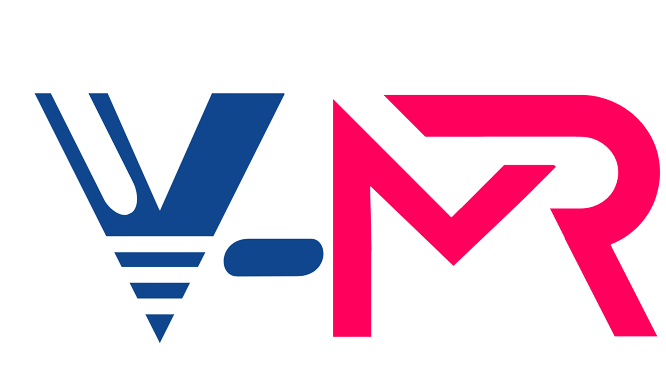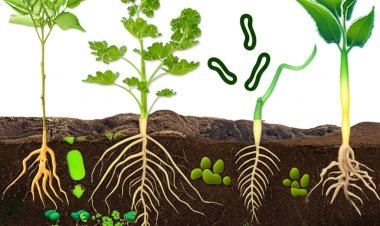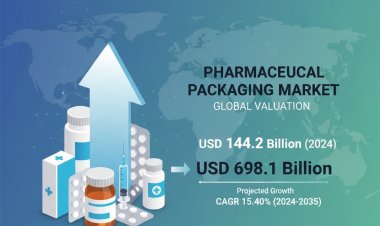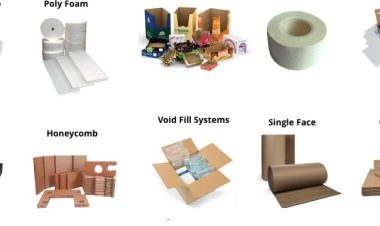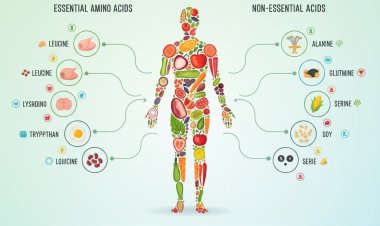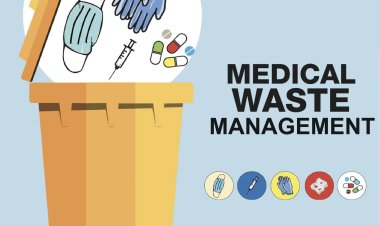Global Fertilizer Market Analysis 2024-2035: Trends, Drivers, Segmentation, and Future Outlook
Explore the global fertilizer market with insights on current valuation, growth drivers, segmentation, regional trends, environmental impact, innovations, competitive landscape, and strategic recommendations for 2024-2035.

Understanding the Growth of the Global Fertilizer Market from 2024 to 2035
The global Fertilizer Market stands as a cornerstone of modern agriculture, underpinning food security and crop productivity worldwide. According to analysts at Vantage Market Research, the market is currently valued at USD 195.4 billion in 2024 and is projected to reach USD 311.3 billion by 2035, reflecting a robust compound annual growth rate (CAGR) of 4.30% between 2025 and 2035. This growth trajectory is shaped by a confluence of factors, including rising global population, evolving dietary patterns, and the intensification of agricultural practices to meet escalating food demand.
The current market landscape is characterized by a dynamic interplay between traditional fertilizer products and innovative solutions tailored to address both productivity and sustainability. The demand for fertilizers is not only driven by the need to maximize crop yields but also by the imperative to replenish soil nutrients depleted by intensive farming. As a result, the market has witnessed a steady increase in the adoption of both inorganic and organic fertilizers, each catering to specific agronomic requirements and regulatory frameworks.
Key drivers propelling market growth include the expansion of arable land in developing regions, government initiatives to boost agricultural output, and the proliferation of advanced farming techniques. Additionally, the integration of digital technologies and precision agriculture tools has enabled farmers to optimize fertilizer application, thereby enhancing efficiency and minimizing environmental impact. These advancements are complemented by a growing awareness of sustainable farming practices, prompting a gradual shift towards eco-friendly fertilizer options.
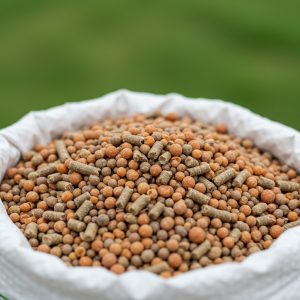
Looking ahead, the fertilizer market is poised for significant transformation. The projected increase to USD 311.3 billion by 2035 underscores the sector’s resilience and adaptability in the face of evolving challenges such as climate change, resource scarcity, and regulatory pressures. Market participants are increasingly investing in research and development to innovate new formulations, improve nutrient use efficiency, and reduce the ecological footprint of fertilizer production and application. As the global community intensifies efforts to achieve food security and environmental sustainability, the fertilizer market will remain a critical enabler of agricultural progress and economic development.
Demand Drivers in the Fertilizer Market
The fertilizer market’s sustained growth is fundamentally anchored in the interplay of demographic, economic, and technological factors. Foremost among these is the relentless rise in global population, which is projected to surpass 9 billion by 2050. This demographic surge translates into heightened demand for food, feed, and fiber, placing unprecedented pressure on agricultural systems to deliver higher yields from finite land resources. Fertilizers, by replenishing essential soil nutrients, play a pivotal role in bridging the gap between potential and actual crop productivity.
Urbanization is another significant driver reshaping the fertilizer landscape. As more people migrate to urban centers, the availability of arable land diminishes, necessitating the intensification of agricultural practices on existing farmland. This trend has spurred the adoption of high-yield crop varieties and increased reliance on fertilizers to sustain soil fertility and ensure consistent output. Moreover, changing dietary preferences, particularly the rising consumption of protein-rich foods, have amplified the demand for feed crops, further bolstering fertilizer usage.
Technological advancements in agriculture have also emerged as a catalyst for market expansion. The advent of precision farming, enabled by GPS, remote sensing, and data analytics, has revolutionized fertilizer application by allowing for site-specific nutrient management. This not only enhances crop yields but also reduces input costs and mitigates environmental risks associated with over-application. Additionally, the development of controlled-release and specialty fertilizers has enabled more efficient nutrient delivery, aligning with the goals of sustainable agriculture.
Government policies and subsidies aimed at promoting agricultural productivity have further stimulated fertilizer demand, particularly in emerging economies. Initiatives such as soil health cards, nutrient-based subsidy schemes, and farmer education programs have increased awareness and accessibility of fertilizers among smallholder farmers. At the same time, the private sector’s investment in research and development has yielded innovative products tailored to diverse agro-climatic conditions, expanding the market’s reach and relevance.
The fertilizer market’s growth is underpinned by a complex web of demand drivers, ranging from population dynamics and urbanization to technological innovation and policy support. As these forces continue to evolve, the market is expected to witness sustained expansion, with fertilizers remaining indispensable to global food security and agricultural sustainability.
Market Segmentation and Types of Fertilizers
The global fertilizer market is highly segmented, reflecting the diversity of products, applications, and end-user requirements. At the most fundamental level, fertilizers are classified into two broad categories: organic and inorganic (synthetic) fertilizers. Each category encompasses a wide array of products, distinguished by their nutrient composition, mode of action, and suitability for different crops and soil types.
Inorganic fertilizers, also known as chemical or synthetic fertilizers, dominate the market in terms of volume and value. These include nitrogenous fertilizers (such as urea, ammonium nitrate, and ammonium sulfate), phosphatic fertilizers (like superphosphate and diammonium phosphate), and potassic fertilizers (such as potassium chloride and potassium sulfate). Inorganic fertilizers are prized for their high nutrient content, rapid action, and ease of application, making them the preferred choice for large-scale commercial agriculture.
Organic fertilizers, on the other hand, are derived from natural sources such as animal manure, compost, crop residues, and biofertilizers. While they typically contain lower concentrations of nutrients compared to their synthetic counterparts, organic fertilizers offer the added benefits of improving soil structure, enhancing microbial activity, and promoting long-term soil health. The growing emphasis on sustainable agriculture and environmental stewardship has fueled the adoption of organic fertilizers, particularly in regions with stringent regulatory frameworks and consumer demand for organic produce.
Fertilizers are also available in various forms, including granular, liquid, and water-soluble formulations, each tailored to specific application methods and crop requirements. Granular fertilizers are widely used for broad-acre crops due to their ease of handling and uniform distribution. Liquid fertilizers, favored for their rapid uptake and compatibility with irrigation systems, are commonly applied to high-value horticultural crops. Water-soluble fertilizers, designed for fertigation and foliar feeding, offer precise nutrient delivery and are increasingly popular in greenhouse and protected cultivation systems.
Market segmentation extends to crop type and application sectors, with fertilizers formulated to meet the unique nutritional needs of cereals and grains, fruits and vegetables, oilseeds and pulses, and commercial crops such as cotton, sugarcane, and tobacco. The non-agricultural sector, including turf management, landscaping, and horticulture, also represents a significant market for specialty fertilizers.
The fertilizer market’s segmentation reflects the industry’s adaptability to diverse agronomic challenges and market demands. By offering a broad spectrum of products and application solutions, fertilizer manufacturers are well-positioned to cater to the evolving needs of global agriculture.
Regional Insights and Growth Opportunities
The global fertilizer market exhibits pronounced regional disparities, shaped by differences in agricultural practices, crop patterns, regulatory environments, and economic development. Among the various regions, Asia-Pacific stands out as the dominant force, accounting for the largest share of global fertilizer consumption. This dominance is underpinned by the region’s vast agricultural base, high population density, and government policies aimed at achieving food self-sufficiency.
Countries such as China and India are the primary drivers of fertilizer demand in Asia-Pacific, collectively accounting for a significant proportion of global usage. In China, government initiatives to modernize agriculture, coupled with the adoption of high-yield crop varieties, have spurred fertilizer consumption. India, with its large smallholder farming community, has witnessed sustained growth in fertilizer usage, supported by subsidies and rural development programs. Southeast Asian nations, including Indonesia, Vietnam, and Thailand, are also emerging as key markets, driven by expanding plantation agriculture and rising food demand.
North America and Europe represent mature markets characterized by high per capita fertilizer consumption and advanced agricultural practices. In these regions, the focus is increasingly shifting towards specialty fertilizers, precision agriculture, and sustainable nutrient management. Regulatory frameworks promoting environmental protection and resource efficiency have accelerated the adoption of controlled-release and organic fertilizers.
Latin America and Africa present significant growth opportunities, fueled by the expansion of commercial agriculture, rising investment in infrastructure, and government efforts to boost food production. Brazil, as the leading agricultural powerhouse in Latin America, has witnessed robust growth in fertilizer demand, particularly for soybeans, corn, and sugarcane. In Africa, initiatives to improve soil fertility and enhance crop yields are driving the uptake of fertilizers, although challenges related to affordability and distribution persist.
Key players in the global fertilizer market, including Yara International, Nutrien Ltd., The Mosaic Company, and CF Industries, have adopted diverse strategies to consolidate their market positions. These include mergers and acquisitions, capacity expansions, product innovation, and strategic partnerships with local distributors and agribusinesses. The entry of new players and the rise of regional manufacturers have intensified competition, fostering innovation and driving down costs.
Emerging markets, particularly in Asia, Africa, and Latin America, offer untapped potential for growth, given their large agricultural sectors and rising food demand. Investments in infrastructure, technology transfer, and farmer education will be critical to unlocking these opportunities and ensuring the sustainable development of the global fertilizer market.
Environmental Impact and Regulatory Landscape
The widespread use of fertilizers has undeniably contributed to increased agricultural productivity and food security. However, it has also given rise to a host of environmental challenges, prompting a re-evaluation of fertilizer management practices and regulatory frameworks. One of the most pressing concerns is the issue of excessive fertilizer application, which can lead to nutrient runoff, water pollution, soil degradation, and greenhouse gas emissions.
Nutrient runoff, particularly of nitrogen and phosphorus, is a major contributor to the eutrophication of water bodies, resulting in algal blooms, oxygen depletion, and loss of aquatic biodiversity. In addition, the volatilization of nitrogen fertilizers releases nitrous oxide, a potent greenhouse gas, exacerbating climate change. Soil health is also compromised by the overuse of chemical fertilizers, which can disrupt microbial communities, reduce organic matter content, and impair soil structure.
In response to these challenges, there is a growing shift towards sustainable farming practices that prioritize nutrient use efficiency, soil health, and environmental stewardship. Integrated nutrient management, which combines the judicious use of inorganic and organic fertilizers, crop rotation, and conservation tillage, is gaining traction as a holistic approach to sustainable agriculture. The adoption of precision agriculture technologies further enables farmers to tailor fertilizer application to crop needs, minimizing waste and environmental impact.
The regulatory landscape governing fertilizer production and use is becoming increasingly stringent, particularly in developed regions such as North America and Europe. Regulations pertaining to nutrient management, water quality, and greenhouse gas emissions are shaping market dynamics and driving innovation in fertilizer formulations and application methods. Compliance with these regulations often necessitates significant investment in research, technology, and infrastructure, posing challenges for small and medium-sized enterprises.
At the same time, international organizations and governments are promoting the development and adoption of eco-friendly fertilizers, such as biofertilizers, slow-release formulations, and products derived from renewable resources. Certification schemes, labeling requirements, and incentives for sustainable practices are further influencing consumer preferences and market trends.
The environmental impact of fertilizer use and the evolving regulatory landscape are reshaping the global fertilizer market. The industry’s future will be defined by its ability to balance productivity with sustainability, leveraging innovation and best practices to meet the dual goals of food security and environmental protection.
Innovations and Trends in Fertilizer Production
Innovation is at the heart of the fertilizer industry’s response to the twin challenges of productivity and sustainability. Recent years have witnessed significant advances in fertilizer production, formulation, and application, driven by the need to enhance nutrient use efficiency, reduce environmental impact, and meet the evolving demands of modern agriculture.
One of the most notable trends is the development of controlled-release fertilizers (CRFs), which are designed to release nutrients gradually over time, synchronizing with crop uptake patterns. This not only improves nutrient efficiency but also minimizes losses due to leaching, volatilization, and runoff. CRFs are particularly valuable in intensive cropping systems and regions with high rainfall, where conventional fertilizers are prone to rapid nutrient loss.
The rise of biofertilizers and organic options represents another significant innovation in the market. Biofertilizers, which contain living microorganisms that enhance nutrient availability and soil health, are gaining popularity as a sustainable alternative to chemical fertilizers. Products such as nitrogen-fixing bacteria, phosphate-solubilizing microbes, and mycorrhizal fungi are being increasingly adopted in both conventional and organic farming systems. The growing consumer demand for organic produce and the push for sustainable agriculture have further accelerated the adoption of organic fertilizers derived from compost, manure, and plant residues.
Technological solutions for precision agriculture are transforming fertilizer application, enabling farmers to apply the right amount of nutrients at the right time and place. Tools such as soil sensors, drones, satellite imagery, and data analytics provide real-time insights into soil fertility, crop health, and nutrient requirements. Variable rate technology (VRT) allows for site-specific fertilizer application, optimizing input use and reducing environmental impact. These innovations are particularly relevant in large-scale commercial agriculture, where efficiency gains can translate into significant cost savings and yield improvements.
The integration of digital platforms and mobile applications is also enhancing farmer access to information, recommendations, and market linkages. Digital advisory services, soil testing kits, and decision support tools are empowering farmers to make informed choices about fertilizer selection and application, improving productivity and sustainability.
The fertilizer industry is undergoing a period of rapid innovation, driven by advances in product development, biotechnology, and digital agriculture. These trends are reshaping the market landscape, offering new opportunities for growth and differentiation while addressing the pressing challenges of resource efficiency and environmental stewardship.
Competitive Landscape in the Fertilizer Sector
The global fertilizer market is characterized by intense competition, with a mix of multinational corporations, regional players, and emerging startups vying for market share. The industry’s competitive landscape is shaped by factors such as product portfolio, geographic reach, technological capabilities, and strategic partnerships.
Major companies dominating the market include Yara International (Norway), Nutrien Ltd. (Canada), The Mosaic Company (USA), CF Industries Holdings, Inc. (USA), and Israel Chemicals Ltd. (ICL). These industry leaders have established a strong global presence through extensive distribution networks, diversified product offerings, and significant investments in research and development. Their ability to innovate and adapt to changing market dynamics has enabled them to maintain a competitive edge.
Mergers and acquisitions (M&A) have played a pivotal role in shaping the industry’s structure, enabling companies to expand their market reach, enhance product portfolios, and achieve economies of scale. Notable transactions in recent years include the merger of Agrium and PotashCorp to form Nutrien Ltd., and the acquisition of Vale Fertilizantes by The Mosaic Company. These strategic moves have consolidated market positions and facilitated access to new markets and technologies.
Market share analysis reveals a concentration of market power among the top players, particularly in the production of nitrogenous, phosphatic, and potassic fertilizers. However, the rise of regional manufacturers and specialty fertilizer producers has introduced greater competition, particularly in emerging markets. These companies often leverage local knowledge, cost advantages, and tailored solutions to address specific agronomic challenges.
Innovation remains a key differentiator in the competitive landscape, with companies investing in the development of specialty fertilizers, biofertilizers, and digital agriculture solutions. Strategic collaborations with research institutions, technology providers, and agribusinesses are enabling companies to stay ahead of the curve and respond to evolving customer needs.
The fertilizer sector’s competitive landscape is dynamic and evolving, shaped by consolidation, innovation, and the entry of new players. Companies that can effectively balance scale, agility, and innovation will be best positioned to capitalize on the market’s growth opportunities and navigate the challenges ahead.
Future Outlook and Strategic Recommendations
The outlook for the global fertilizer market is decidedly optimistic, with robust growth projected through 2035. The anticipated increase in market value to USD 311.3 billion reflects the sector’s critical role in supporting global food security, economic development, and environmental sustainability. However, realizing this potential will require concerted efforts from all stakeholders to address emerging challenges and capitalize on new opportunities.
Opportunities for stakeholders abound across the value chain, from raw material suppliers and manufacturers to distributors, retailers, and end-users. The expansion of emerging markets, driven by rising food demand and agricultural modernization, offers significant growth potential. Investments in infrastructure, technology transfer, and capacity building will be essential to unlocking these opportunities and ensuring inclusive market development.
Strategies for growth and sustainability should prioritize innovation, efficiency, and environmental stewardship. Companies must continue to invest in research and development to create new fertilizer formulations, improve nutrient use efficiency, and reduce the environmental footprint of production and application. The adoption of digital agriculture tools, precision farming techniques, and integrated nutrient management practices will be critical to enhancing productivity and sustainability.
Collaboration and partnerships will play a vital role in driving market growth and addressing complex challenges. Public-private partnerships, industry alliances, and multi-stakeholder initiatives can facilitate knowledge sharing, technology transfer, and capacity building, particularly in developing regions. Engaging with policymakers, regulators, and civil society organizations will be essential to shaping an enabling environment for sustainable fertilizer use.
The importance of research and development (R&D) cannot be overstated. Continued investment in R&D will be necessary to address emerging challenges such as climate change, resource scarcity, and evolving pest and disease pressures. Innovations in biotechnology, nanotechnology, and digital agriculture hold the promise of transforming fertilizer production and application, delivering benefits for farmers, consumers, and the environment.
In summary, the future of the global fertilizer market will be defined by its ability to innovate, adapt, and collaborate in pursuit of shared goals. By embracing sustainability, leveraging technology, and fostering partnerships, stakeholders can ensure the continued growth and resilience of the fertilizer industry, securing its place as a cornerstone of global agriculture for decades to come.
FAQs
- What factors are driving the growth of the global fertilizer market?
- How is the Compound Annual Growth Rate (CAGR) calculated for the fertilizer market?
- What are the key trends shaping the future of the fertilizer market from 2025 to 2035?
- How does the projected growth of the fertilizer market impact agricultural practices globally?
☎ Contact Us:
224 W 35th St Ste 500 New York,
USA/Canada Toll Free +1(877) 462-2282
+1(212) 951-1369
✉ Email: [email protected]
???? Website: https://www.vantagemarketresearch.com
